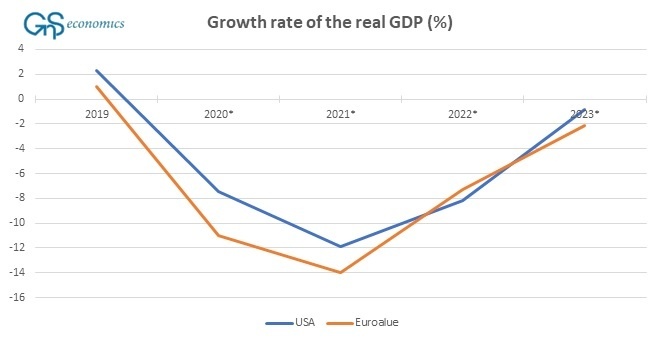The Ginnie Mae CUSIP aggregation program started in March 2019 and was completed in July 2019 and the Desk consolidated approximately 8,000 specific CUSIPs into about 8 aggregated ones. The aggregation procedure was created to decrease administrative expenses and operational intricacies connected with the Federal Reserve's firm MBS portfolio using a straightforward and rules-based method that is consistent with market.
operating objectives and standard market practices. Other The New York Fed publishes detailed data on all settled SOMA company MBS holdings on its on a weekly basis. In addition, Fannie Mae, Freddie Mac, and Ginnie Mae provide details about aggregated CUSIPs, including the underlying company MBS, on their public sites. Yes. Info about individual Fannie Mae, Freddie Mac, and Ginnie Mae firm MBS CUSIPs underlying the Federal Reserve's aggregated CUSIPs will remain available on these organizations' public websites.
's recently enforced restriction on repooling of reperforming forborne loans yet again penalizes servicers functioning as vital provider in the continuing efforts to protect debtors dealing with monetary challenge due to COVID-19. Let me count a few of the ways Ginnie Mae servicers are bearing the brunt of debtor forbearance under the CARES Act: no maintenance cost income during forbearance of as much as a year( and possibly longer ought to Congress decide its needed); no relief from advance requirements for the period of such forbearance; no revision of the structural obstacles to private financing to money advances; and no compensation for the expense of funds for advances. In issuing APM-20-07 on June 29, 2020, Ginnie Mae decided to even more safeguard investors from the prospective enhanced prepayment threat arising from early pool buyouts of forborne loans. This defense, nevertheless, comes at the expense of servicers. By limiting servicers from counting on long-standing, legitimate company activity early pool buyouts combined with the repooling of reperforming loans Ginnie Mae has elected to consider a routine activity as unsuitable since it is unneeded and, gosh, may produce a profit. This commitment lasts till the defaulted loan is acquired out.
loan secured by the mortgaged property, the earnings of which are used to bring the loan present. By utilizing a junior lien, the loan does not need to be modified. Currently, a servicer may accomplish a" stand alone partial claim" or a" home mortgage recovery advance" without redeeming the overdue loan from the pool, however servicers consistently integrate the permissible early buyout of an overdue loan, a reinstatement through a" stand alone partial claim" or" home mortgage healing advance, "and a repooling of the reperforming loan into recently provided securities. First, the borrower under a reperforming loan need to have made timely payments for the six months instantly https://lifestyle.mykmlk.com/story/43143561/wesley-financial-group-responds-to-legitimacy-accusations preceding the month in which the associated mortgage-backed securities are provided.
Second, the problem date of the mortgage-backed securities should be at least 210 days from the last date the loan was overdue." Reperforming Loans "are not limited to loans that are reinstated through a" stand alone partial claim" or "home loan healing advance." The term is broadly defined to be a loan that is not more than thirty days overdue, formerly was https://plattevalley.newschannelnebraska.com/story/43143561/wesley-financial-group-responds-to-legitimacy-accusations purchased out of a Ginnie Mae pool, and has the exact same rate and terms as the initially pooled loans. The APM only hints at the factor behind Ginnie Mae's change in position, specifying that "Ginnie Mae seeks to ensure that transactional activity connected to these choices does not impair market self-confidence in Ginnie Mae securities. "It highlights that FHA's "Stand Alone Partial Claim" and USDA's "Mortgage Recovery Advance" do not require pool repurchases unless the terms of.
See This Report about When Did Subprime Mortgages Start In 2005

the loan need modification. Just put, Ginnie Mae is depriving servicers of an enduring, genuine, elective service technique under the Ginnie Mae program obviously since this discretionary activity is not necessary to enable a servicer to stop servicing advances in respect of forbearance. Getting a make money from repooling reperforming loans somehow is considered as a dubious activity. In isolation, insulating financiers in Ginnie Mae securities from enhanced prepayment threat associating with forbearance definitely is a deserving public policy goal. When compared to the costs, expenditures and lost revenue servicers are bearing in regard of forbearance, one has to wonder whether Ginnie Mae is relatively balancing the interests of servicers and investors.
While Ginnie Mae may have the authority to revise the Mortgage-Backed Securities Guide from time to time, servicers have a right to fairly depend on the fundamental construct of the program without material unfavorable modifications not grounded in law or abuse. Servicers produce, acquire and finance their Ginnie Mae MSRs based on this sensible expectation. When you desire to have a good time in the sun right in.
your yard, a pool of your own might be paradise. A pool features a hefty cost tag, though, so be prepared to pay for it with time. While you have a couple of different alternatives, one of the easiest is to fund a brand-new pool with a brand-new mortgage. First, call the lender with which you have your existing home loan to inquire about a new home loan.
Often your existing loan provider will aspire to keep your financing, potentially offering attractive interest and terms. what banks give mortgages without tax returns. Note the terms provided by your current loan provider. Approach 2 or three other loan providers to ask about a brand-new home mortgage. With a brand-new lender, you will need to show proof of identity and earnings, warranty deed and property owner's insurance coverage. The new lender will examine your credit and.
examine the worth of your home throughout a prequalification process. After confirming your information and evaluating your credit reliability, the lending institution might extend you prequalification status.